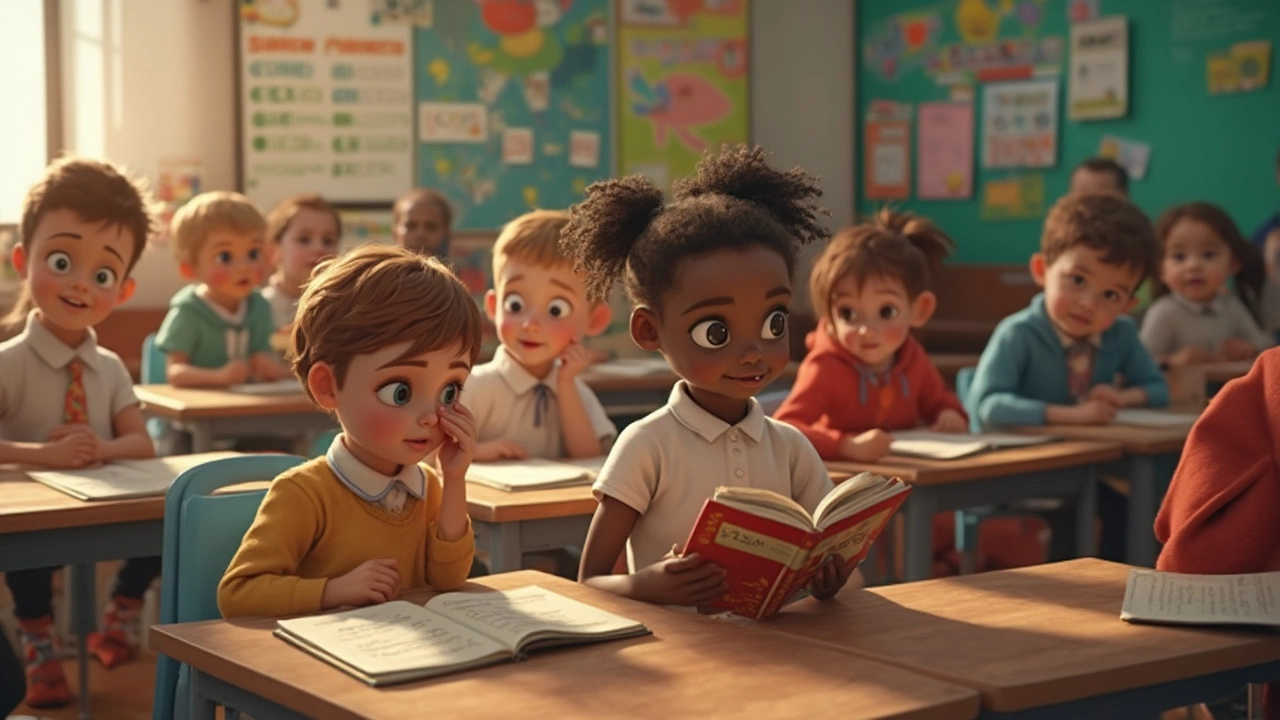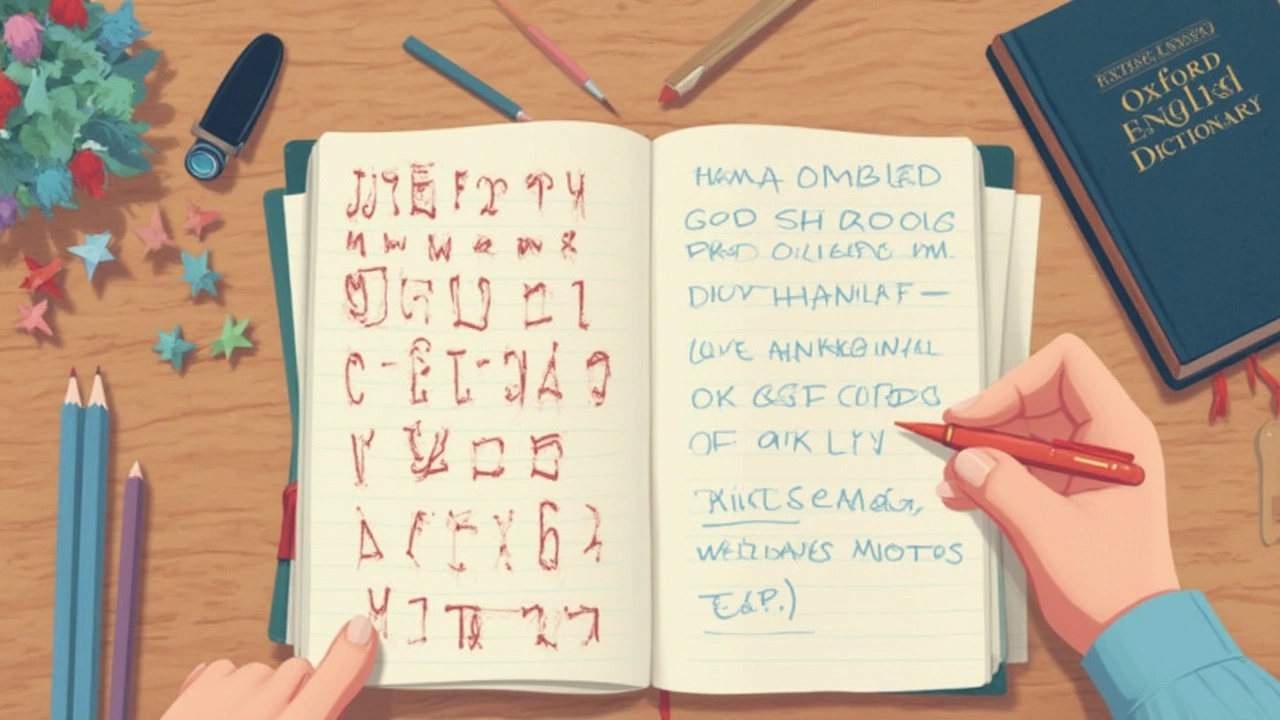-
26
- 0

Most Common Learning Disability in Students: Dyslexia Explained
Ever notice a bright kid who struggles to read or gets frustrated with spelling—even though they work hard? More often than not, dyslexia is behind it. This learning disability doesn’t mean someone isn’t smart. In fact, lots of creative thinkers, inventors, and famous authors had dyslexia.
Dyslexia messes with how the brain handles language. It shows up as trouble matching letters to sounds, reading smoothly, or remembering how to spell new words. What’s wild is that it’s way more common than people think, cutting across all ages and backgrounds. One out of every ten students deals with some form of dyslexia, though the real number may be higher since it often goes unnoticed.
If you’re a parent or teacher, knowing the warning signs early sets a kid up for success. Getting help isn’t about curing dyslexia—that’s not how it works. It’s about finding the right tools and teaching methods so these students can keep up and even thrive. Simple things, like using audiobooks or voice-to-text, can be game-changers in the classroom or at home.
- What Makes Dyslexia So Common?
- Signs That Might Surprise You
- Myths and Facts About Dyslexia
- Practical Support at Home and School
What Makes Dyslexia So Common?
Dyslexia stands out as the most common learning disability for a few simple reasons. First, it’s built right into how the brain processes language—specifically, how we connect letters and sounds. It’s not about smarts; instead, it’s about those language connections running on a different track. Scientists have even found certain genes linked to dyslexia, so it often runs in families. If you know someone with dyslexia, there’s a good chance a sibling, parent, or cousin wrestles with it, too.
Why’s it everywhere? Because reading and writing are such huge parts of school. When something messes with those basics, it shows up fast. People might not catch it right away, though, especially if a kid is clever at hiding struggles or memorizes words instead of sounding them out. Sometimes, teachers and parents chalk up problems to laziness or not paying attention, but the root cause is deeper.
The numbers tell the story. Here’s a look at what researchers and organizations have found:
| Fact | Detail |
|---|---|
| How many students are affected? | 5-15% of students show signs of dyslexia. That’s 1 or 2 kids in every classroom. |
| Family history | Up to 40% chance if a parent or sibling has dyslexia. |
| Age of diagnosis | Many don’t get flagged until late elementary or even middle school. |
Kids don’t outgrow dyslexia, but early support can make a massive difference. The reason it feels so common is because reading touches nearly everything kids do in school—so any little glitch gets noticed pretty quickly. Plus, with more schools screening early and more parents speaking up, researchers are finding it’s even more widespread than anyone thought before.
Signs That Might Surprise You
Most folks expect dyslexia to look like letters flipping or words getting jumbled on the page. That can happen, but there’s a whole menu of signs that slip under the radar, especially in younger kids.
One of the earliest hints? Kids might memorize stories word-for-word but stumble the moment you ask them to read something new. Lots of parents think their child is just not paying attention or isn’t trying hard enough. In reality, even smart kids with dyslexia can have a tough time telling apart small sound changes—like the difference between “bat” and “pat.”
- Mixing up the order of letters in words or writing the wrong sounds for letters—like "b" for "d" or "was" for "saw."
- Slow, choppy reading out loud, even after lots of practice.
- Remembering information better when it’s spoken instead of written down.
- Trouble learning common rhymes or clapping out different sounds.
- Difficulty following lists or directions given in writing.
This isn’t just about reading. Dyslexia can pop up in spelling, writing, and sometimes with numbers, especially when copying from the board in class. Teachers might notice written work that looks rushed or has way more errors than classmates’ efforts.
Another curveball? These students often have a huge gap between what they can explain out loud and what shows up on paper. Their ideas are strong, but their handwriting or spelling can throw teachers off.
If you spot any of these signs, step in early. Don’t wait for kids to fail first or let them fall through the cracks. Spotting issues before third grade and getting the right support makes a massive difference in school—and life later on.

Myths and Facts About Dyslexia
Dyslexia’s surrounded by plenty of myths that make things trickier for families and teachers. These mix-ups can lead to kids missing out on the help they really need. Let’s bust the biggest myths and break down what the facts actually say.
- Myth: Dyslexia is about seeing letters or words backwards.
Fact: Flip-flopping letters, like mixing up “b” and “d,” is just a small part. Dyslexia is mainly about how the brain processes sounds and letters. It’s a language processing thing, not just a “reading backwards” problem. - Myth: Kids with dyslexia are less intelligent.
Fact: Tons of people with dyslexia are super smart and creative. Intelligence isn’t linked to dyslexia. Albert Einstein and Steven Spielberg are famous examples. - Myth: Dyslexia is rare.
Fact: It’s the most common learning disability in students. About 10% of the population is affected, but lots go undiagnosed because the signs aren’t always super obvious. - Myth: There’s a “cure” for dyslexia.
Fact: Dyslexia is a lifelong thing. But with the right support and reading strategies, kids can make a ton of progress and do just as well as their classmates. - Myth: Only boys struggle with dyslexia.
Fact: Both boys and girls can have dyslexia. Boys might get diagnosed more often, probably because their struggles stand out behaviorally in school.
If you want some clear numbers, check this out:
| Fact | Percentage or Data |
|---|---|
| Students worldwide with dyslexia | 10-15% |
| Chance of having dyslexia if a parent has it | 40-60% |
| Amount who are misdiagnosed or undiagnosed | Up to 70% |
Understanding what’s true about dyslexia can change the whole school experience for a kid. Instead of frustration and embarrassment, they get tools that play to their strengths—and that’s a game changer.
Practical Support at Home and School
Giving kids with dyslexia the right tools can totally change how they feel about learning. Simple adjustments—both in class and at home—can make life less stressful and help kids reach their potential.
The International Dyslexia Association says,
“With appropriate teaching methods, dyslexic students can learn successfully and even excel.”Not every student needs the exact same thing, but a lot of strategies have proven to work again and again for most families and classrooms.
An easy first step: don’t force a student to read aloud if it makes them anxious. Instead, try alternative ways of participating, like group discussions or projects using pictures. Technology is a real lifesaver here. Tools like audiobooks, voice-to-text, and spellcheckers aren’t just shortcuts—they can level the playing field so kids aren’t left behind because of their reading speed.
- Break assignments into smaller steps. Big chunks of information can overwhelm kids with dyslexia. Smaller pieces are more manageable.
- Give extra time for reading and tests. This one helps more than you'd think. It lowers pressure and lets students actually show what they know.
- Use visuals. Charts, mind maps, and color-coded notes help ideas stick.
- Encourage keyboard skills. Typing is often easier than writing by hand for students with dyslexia.
Here’s a quick snapshot of options that really help kids at school and home:
| Support/Tool | How It Helps | Where to Use |
|---|---|---|
| Audiobooks | Boosts comprehension and lets kids enjoy stories without struggling to decode words | Home, School |
| Voice-to-Text Software | Helps with writing assignments and reduces frustration with spelling | Home, School, Remote Learning |
| Extra Time on Tests | Removes stress, gives a fair chance to show knowledge | School |
| Visual Organizers | Makes complex ideas clear and memorable | Both |
What’s key is that support needs to feel normal—like no big deal. The more families and teachers talk openly about different ways of learning, the more confident kids become. Teaming up with a school’s learning specialist, or joining a local dyslexia support group, gives families the know-how and community support to figure out what works best.
If you’re looking for extra ideas, check out trusted sites like Understood.org or the International Dyslexia Association. A simple change at home or in class can spark huge growth, so don’t be afraid to try out new tools or switch things up until something clicks for your student!
Write a comment
Tags Weight
- education
- exam preparation
- study tips
- adult education
- online courses
- adult learning
- lifelong learning
- distance learning
- GCSE revision
- online education
- private tutoring
- special needs education
- scholarships
- remote learning
- scholarship tips
- financial aid
- international students
- effective learning
- e-learning
- education funding

Written by Elara Winslow
View all posts by: Elara Winslow